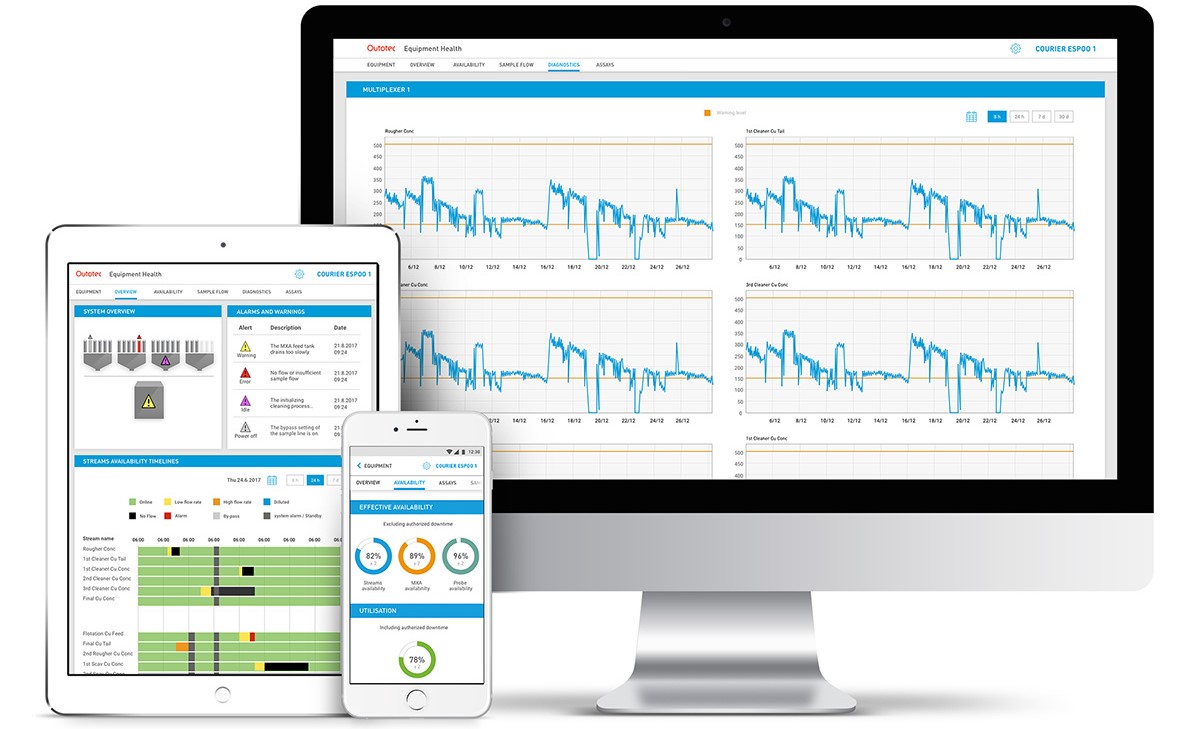Online elemental analyzers provide real-time measurement information from different locations in the flotation process. This information allows efficient process control and affects the economic performance of the whole plant. To enable optimal control and performance, it is essential that the online analyzer is available to measure critical process streams and provide accurate measurements that represent the true status of the flotation process. In other words, to achieve optimal flotation performance we must ensure that the analyzer is also performing optimally.
Making good maintenance even better
High-quality equipment alone cannot guarantee high availability, even with proper design and implementation. Minimizing unscheduled downtime – and being able to plan scheduled downtime optimally – can lead to a significant increase in productivity. With efficient maintenance in place, it is possible to directly affect the availability of equipment and in some cases production quality. For example, proper calibration of an on-stream analyzer will reduce fluctuations in controlling concentrate grade.
The traditional factors that define good maintenance include availability of spare parts, capability of service technicians, and fast response times. However, new digital technologies and Internet of Things connectivity provide the opportunity to improve service quality even further. Outotec has developed a visualization and notification app – the Outotec Equipment Health Indicator – that monitors the health of online analyzer equipment and assists users to improve the availability of the assays. The aim of the app is to make analyzer availability and performance transparent, offer the best possible support to maximize equipment utilization, and enable continuous improvement in equipment performance.
The challenges of calculating availability
The Outotec Equipment Health Indicator provides automatic reports on Key Performance Indicators (KPIs) covering various components of the online analyzer system, including the analyzer probe, multiplexer units, and individual sample lines. Using this information it is possible to focus maintenance actions on problematic areas and systematically improve the overall availability of the analyzer. During development, it became apparent that calculating analyzer availability – and the availability of critical components – was far from trivial.
Following Nakajima (1988), Utilization can be calculated using the following equation:




